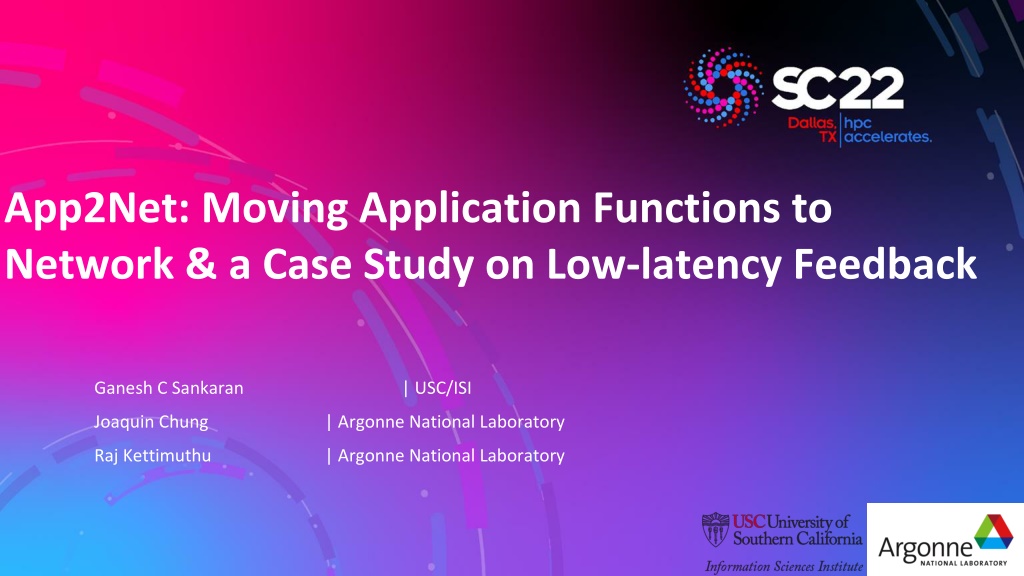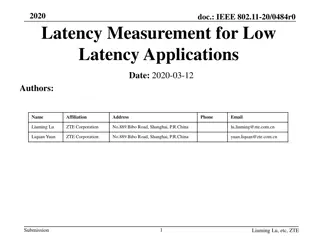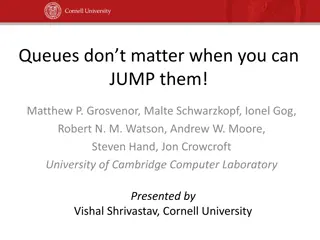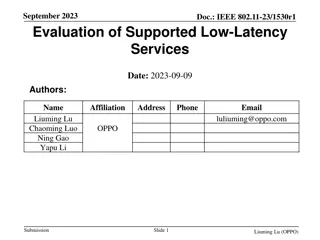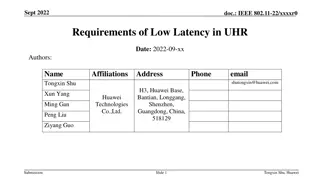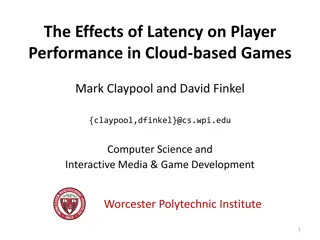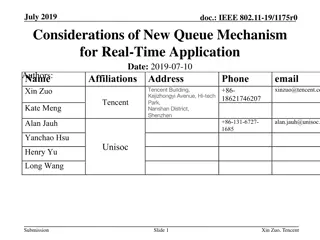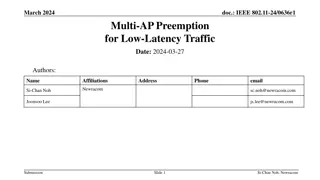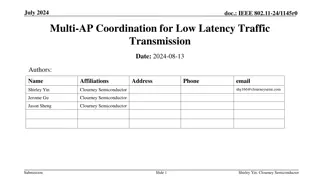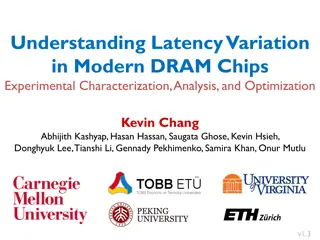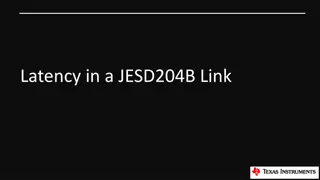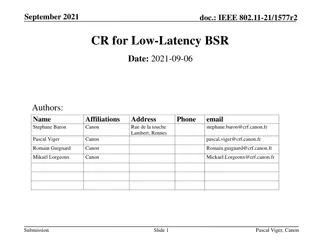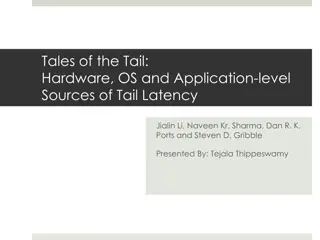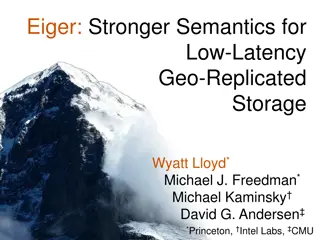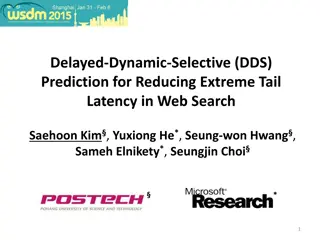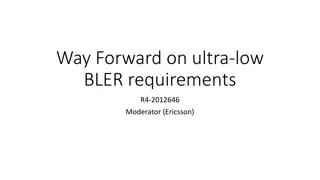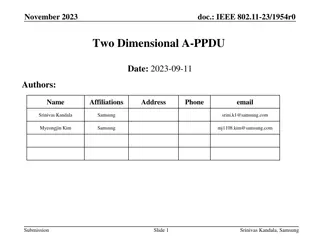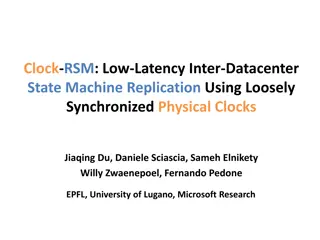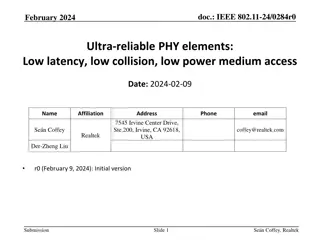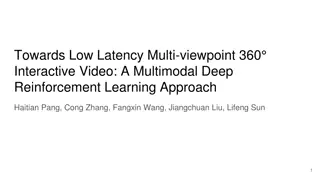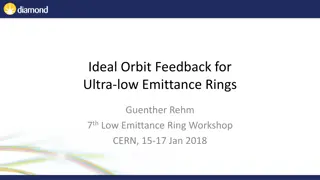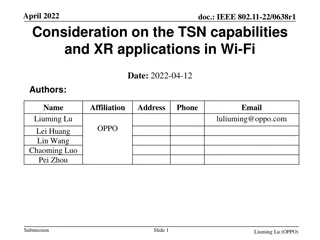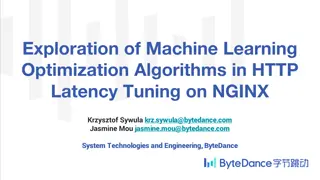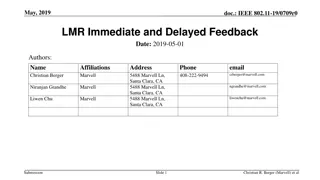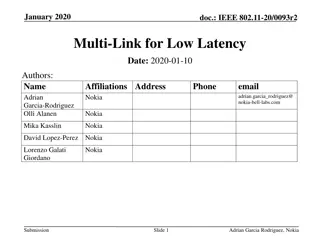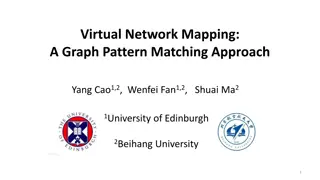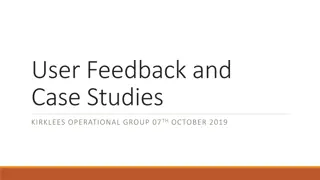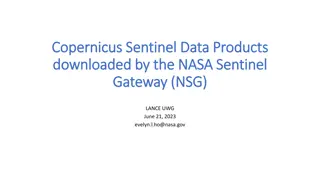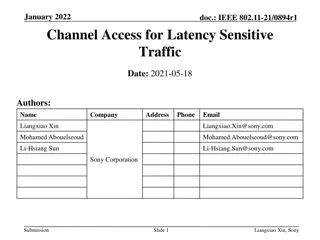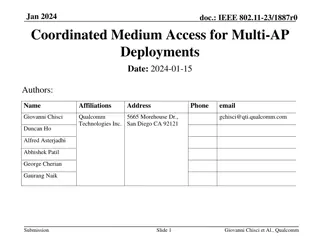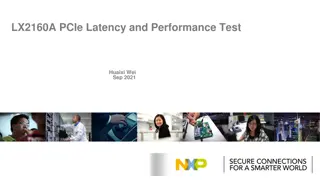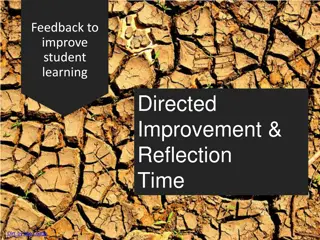Moving Application Functions to Network: A Case Study on Low-latency Feedback
This study explores the integration of network resources into application design, focusing on the importance of low-latency feedback loops. It discusses the motivation behind involving the network in application functioning and presents a case study demonstrating the benefits of incorporating network elements. The challenges and opportunities of data plane programming languages are also highlighted.
Download Presentation

Please find below an Image/Link to download the presentation.
The content on the website is provided AS IS for your information and personal use only. It may not be sold, licensed, or shared on other websites without obtaining consent from the author. Download presentation by click this link. If you encounter any issues during the download, it is possible that the publisher has removed the file from their server.
E N D
Presentation Transcript
App2Net: Moving Application Functions to Network & a Case Study on Low-latency Feedback Ganesh C Sankaran | USC/ISI Joaquin Chung | Argonne National Laboratory Raj Kettimuthu | Argonne National Laboratory
Motivation Stage 3 Stage 2 Stage 1 Eth Eth Eth Packet IP IP IP Today, Network resources are not involved in application design Why involve network? Data Data Data Code ALU ALU ALU Low latency High throughput Table a b c Custom processing (Programmable networks) When to involve network?
Motivation Feedback loop Compute resource @ Geo Y Data source @ Geo X High data rate Today, Network resources are not involved in application design Existing feedback loop When to involve network? Why involve network? Low-latency Feedback loop Compute resource @ Geo Y Data source @ Geo X Quickly find needle in a haystack type workloads In-Network High data rate Payload based low latency feedback
Case study Light source experiment generates high data rate streams (~10 Gbps) Typical data flow: From instrument in one location to HPC in another HPC computes calibration parameters and notifies the instrument. Instrument is calibrated based on feedback from HPC Data = Information + noise Noise sources: systematic electronic noise, misalignment of images, etc. Why feedback latency is important? Instrument generates images with current calibration parameters until informed Can programmable data plane detect miscalibration and inform the instrument?
Motivation Today, Network resources are not involved in application design Exclusive zone P4 NPL SDx My comfort zone SQL MapReduce Python How to involve network? Why/ When to involve network? ?? Exclusive programming model/ language/ tool chain/ environment As a programmer, more challenges than solutions
Motivation Today, Network resources are not involved in application design Exclusive zone P4 NPL SDx My comfort zone SQL MapReduce Python Need a simple yet powerful programming model Why/When/How to involve network ?? Simple in terms of adoption Powerful in terms of representing domain nuances
Challenges Data plane programming languages (P4, etc.) exploit programmable switch hardware features Deep expertise required in data plane programming languages & algorithm design for programmable switch hardware Switch hardware features not comparable to existing CPU or GPU Restrictions imposed on functional blocks such as parsing does not support control statements Memory access outside packet buffer restricted
Challenges Data plane programming languages (P4, etc.) exploit programmable switch hardware features Deep expertise required in data plane programming languages & algorithm design for programmable switch hardware Programmable data planes operate on network headers and not on the payload Many scientific application payloads carry structured data (SQL table output, image pixels, etc.) Payloads that are not well defined or overflow packet boundaries or encrypted not handled
Challenges Data plane programming languages (P4, etc.) exploit programmable switch hardware features Deep expertise required in data plane programming languages & algorithm design for programmable switch hardware Programmable data planes operate on network headers and not on the payload Many scientific application payloads carry structured data (SQL table output, image pixels, etc.) CPU based machines handle repetitions quite well but programmable switch hardware cannot handle repetitions For loops not supported Conditional branching supported in some functional blocks and not in others
Challenges Data plane programming languages (P4, etc.) exploit programmable switch hardware features Deep expertise required in data plane programming languages & algorithm design for programmable switch hardware Programmable data planes operate on network headers and not on the payload Many scientific application payloads carry structured data (SQL table output, image pixels, etc.) CPU based machines handle repetitions quite well but programmable switch hardware cannot handle repetitions Payload based filtering involves understanding the current data in N-dimensions and comparing it with the region of interest Float operations are not supported Many standard Math library functions e.g., sin, cos not supported
Challenges Data plane programming languages (P4, etc.) exploit programmable switch hardware features Deep expertise required in data plane programming languages & algorithm design for programmable switch hardware Programmable data planes operate on network headers and not on the payload Many scientific application payloads carry structured data (SQL table output, image pixels, etc.) CPU based machines handle repetitions quite well but programmable switch hardware cannot handle repetitions Payload based filtering involves understanding the current data in N-dimensions and comparing it with the region of interest Data plane has limited notification capability when compared to CPU based hardware Programmable switches still grappling to support changes at runtime
Approach Source-to-source converter using an intermediate representation Frontend SQL MapReduce Python JSON IR Need a simple yet powerful model for conversion Simple Compiler Less complex from NxN to 2N No new language: JSON No new representation: IR Backend P4 NPL SDx
Approach Source-to-source converter using an intermediate representation Need a simple yet powerful model for conversion Powerful Domain specific IR Specific to Low latency feedback system notify X when field Y in flow Z is out of range R
Approach Source-to-source converter using an intermediate representation Need a simple yet powerful model for conversion Powerful Domain specific IR notify X when field Y in flow Z is out of range R
Approach Source-to-source converter using an intermediate representation Need a simple yet powerful model for conversion Powerful Domain specific IR notify X when field Y in flow Z is out of range R
Approach Source-to-source converter using an intermediate representation Need a simple yet powerful model for conversion Powerful Domain specific IR notify X when field Y in flow Z is out of range R
Approach Source to source converter using an intermediate representation Need a simple yet powerful model for conversion Powerful Domain specific IR notify X when field Y in flow Z is out of range R
Results from prototype compiler control logic (inout headers hdr) { Flow apply { if (hdr.ethernet_t.isValid() && hdr.ipv4_t.isValid() && hdr.udp_t.isValid() && (hdr.tcp.port == 40 && hdr.ipv4.src == "10.1.1.1")) {
Results from prototype compiler Payload Flow header offset_t { bit<150> skip; } parser Pixelparser (packet_in packet, out headers hdr) { state start { packet.extract(hdr.offset); packet.extract(hdr.pload0); packet.extract(hdr.pload1); header payload_t { bit<24> pixel; } transition accept; } struct headers { ethernet_t ethernet; ipv4_t ipv4; offset_t offset; payload_t pload0; payload_t pload1; }
Results from prototype compiler Flow Function Payload if (count >= THRESHOLD) { meta.ipv4dst="10.2.2.2"; meta.udpdport=2022; notify(); } if ((hdr.pload0.pixel <= DARK)) { count=count+1; } if ((hdr.pload1.pixel <= DARK)) { count=count+1; }
Future directions Associating a variable s lifetime (e.g., flow, packet, etc.) Intermediate representation can have multiple conditions but supports only one action currently No wildcard support For more details check out : https://github.com/gsankara/json2p4-compiler-prototype/ We invite the community to contribute
